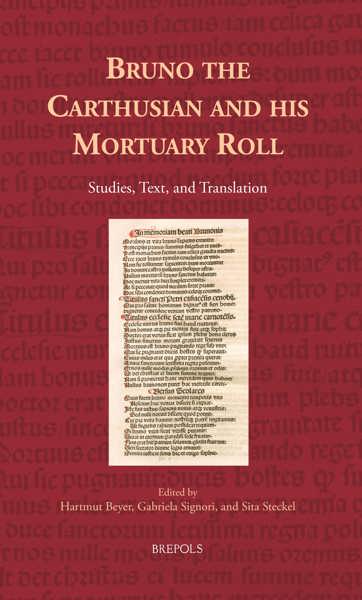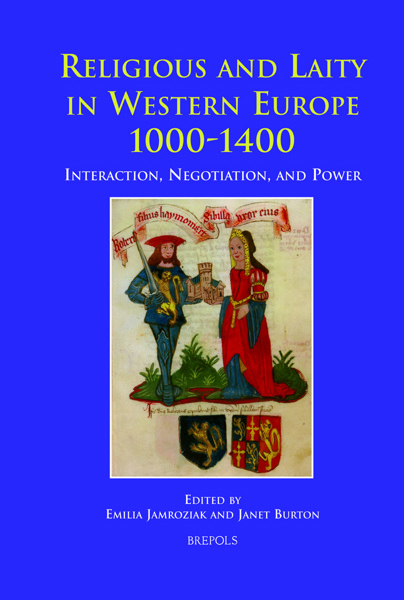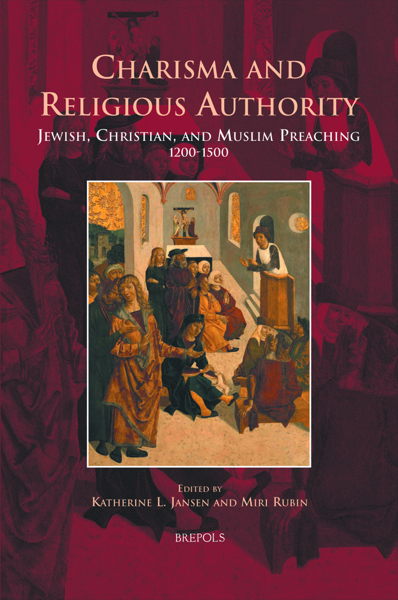
Mulieres Religiosae
Shaping Female Spiritual Authority in the Medieval and Early Modern Periods
Veerle Fraeters, Imke de Gier (eds)
- Pages: xx + 311 p.
- Size:156 x 234 mm
- Illustrations:21 b/w, 8 col.
- Language(s):English
- Publication Year:2014
- € 110,00 EXCL. VAT RETAIL PRICE
- ISBN: 978-2-503-54912-5
- Hardback
- Available
- € 110,00 EXCL. VAT RETAIL PRICE
- ISBN: 978-2-503-55000-8
- E-book
- Available
Mulieres Religiosae considers the nuances of what constitutes female spiritual authority, how it was acquired and manifested by religious women, and how it changed and evolved from the high Middle Ages to the Early Modern period.
"(...) the volume succeeds in showing the tangible ways in which women were able to display agency in shaping their spiritual lives and in assuming positions of authority. The volume has been fashioned for a specialist audience, and will most directly appeal to those scholars interested in the history of Catholic women in the period before the Reformation and Council of Trent. However, scholars interested in the relationship between gender and religion during this period will learn much from the innovative methodologies and approaches employed in this interesting collection of essays, which ‘reveal a dynamic pattern in terms of possibilities for women to display agency in shaping their spiritual lives’." (Naomi Pullin, in: The History of Women Religious in Britain and Ireland, February 2015, https://historywomenreligious.files.wordpress.com/2014/08/mullieres-religiosae-review_final.pdf)
"Die Fokussierung auf die Gender-Perspektive hat - bei aller Verschiedenheit der Ansätze - in der Gesamtschau den Blick geschärft für das Selbstverständnis der Mulieres religiosae und der ihnen jeweils zugewiesenen Rolle in Kirche und Gesellschaft." (Martina Wehrli-Johns, in: Sehepunkte, 15 (2015), Nr. 9, http://www.sehepunkte.de/2015/09/25474.html)
"Overall, the collection advances our understanding of the dynamics and complexities women faced in acquiring and exercising spiritual authority, and highlights the creative ways through which individual women negotiated expectations and constraints in their efforts to claim an authoritative voice as a mulier religiosa." (Julie Hotchin, in: Parergon 32.2, 2015, p. 294-296)
« (…) [une] originalité des approches proposées et il parait évident que la recherche historique a tout a gagner de ce renouveau historiographique et méthodologique en cours. » (Anne-Laure Meril-Bellini delle Stelle, dans Le Moyen Age, 122/2, 2016, p. 505)
“Insgesamt eröffnet der Tagungsband mit seiner Fragestellung der gender-spezifischen Manifestation von Autorität eine neue, weit gefächerte Perspektive auf das Leben geistlicher Frauen im Mittelalter und in der frühen Neuzeit. Die breit angelegte und zeitlich weit umfassende Studie definiert das Bild der geistlichen Frau für sich und innerhalb von Kirche und Gesellschaft neu.” (Stefanie Neidhardt, Rottenburger Jahrbuch für Kirchengeschichte, 35, 2016, Seite 376)
« Il faut saluer en premier lieu la qualité de l’introduction générale, rédigée par les directrices du volume qui exposent avec une grande clarté leur projet et les résultats que donnent à voir les douze études de cas réunies. » (Damien Boquet, dans Clio. Femmes, Genre, Histoire [En ligne], 47
2018, 47
2018, 261-264)
Traditionally women were denied access to positions of official religious authority within Christianity and were therefore compelled to explore other avenues to acquire and express spiritual leadership. Through twelve case studies covering different regions in Europe, this volume considers the nuances of what constituted female spiritual authority, how it was acquired and manifested by religious women, and how it evolved from the high Middle Ages to the Early Modern period. Whilst current scholarship often emphasizes binaries within the fields of gender and religious authority, this volume examines the manifestation of female religious authority in its multiple facets. It looks both at individuals displaying exceptional forms of agency such as prophesying, as well as more commonplace, communal activities such as letter-writing and music-making. By taking into account the pervasiveness of spirituality in society as a whole in the Pre-Modern era, this collection of essays renegotiates the relationship between the spiritual and the social domain. Through the chronological organization of the contributions insight is gained into the changes in the means and forms female religious authority could take between 1150 and 1750. The narrative is clearly impacted by late medieval enclosure policies and by changing modes of spirituality. Whereas women in the earlier period tended to represent themselves as a door through which God could advance towards mankind, later on they functioned more frequently as a portal through which others could advance towards God.
Colour Plates
Introduction: Shaping Female Spiritual Authority in Europe from the High Middle Ages to the Early Modern Period — VEERLE FRAETERS and IMKE DE GIER
Elisabeth von Schönau and the Story of St Ursula: Visionary Authority and the Cult of the Saints — MAR ÍA EUGENIA GÓNGORA
‘You shall all live together in harmony and spiritual unity’: Images of Abbesses and Female Religious Communities in the Empire — ANDREA WORM
Beguines in Hungary? The Case of St Margareta of Hungary (1242–71): A Mystic without a Voice — VIKTÓRIA HEDVIG DEÁK
Sharing Charismatic Authority by Body and Emotions: The Marvellous Life of Lukardis von Oberweimar (c. 1262–1309) — PIROSKA NAGY
Text as Authority: Marguerite Porete’s Mirouer des simples ames — IMKE DE GIER
The Soft Face of Power: Jeanne de Valois and Female Authority in the Middle Ages — ANNEKE B. MULDER -BAKKER
Language and Authority in Julian of Norwich’s Showings — KATHLEEN M. SMITH
Mulieres religiosae and Sorores clausae: The Dominican Observant Movement and the Diffusion of Strict Enclosure in Italy from the Thirteenth to the Sixteenth Century — SYLVIE DUVAL
Book Illumination in the Bridgettine Abbey of Vadstena — EVA LINDQVIST SANDGREN
Female Leadership and Authority in the Sisterbook of Diepenveen — MATHILDE VAN DIJK
Neither ex officio nor ex gratia: The Brussels Visitandines’ Discourses of Authority and the Collective Self, 1668–99 — PING -YUAN WANG
Piae virgines choristae: Musicians for the Greater Glory of God and the Venetian Republic — CAROLINE GIRON -PANEL
Index




